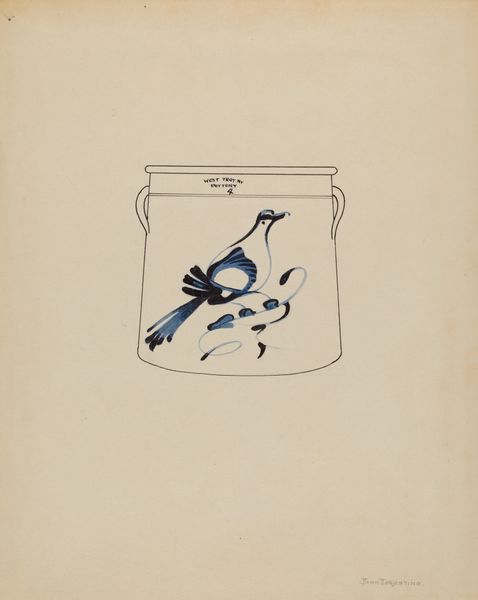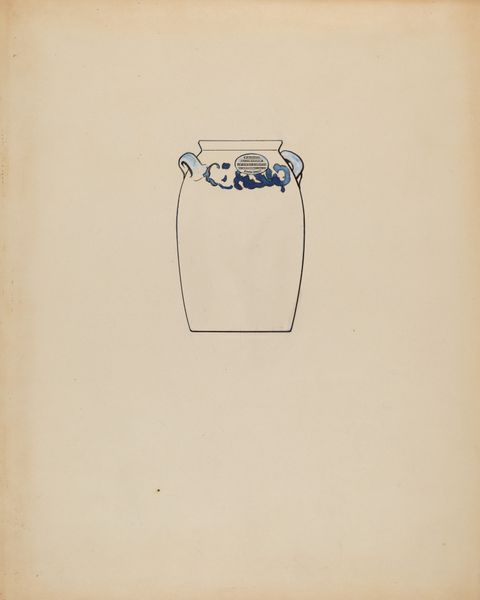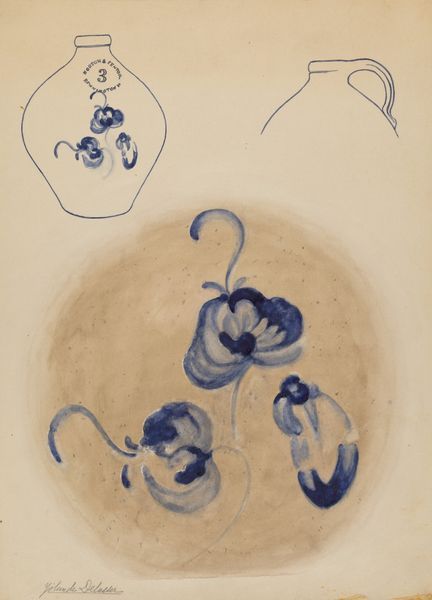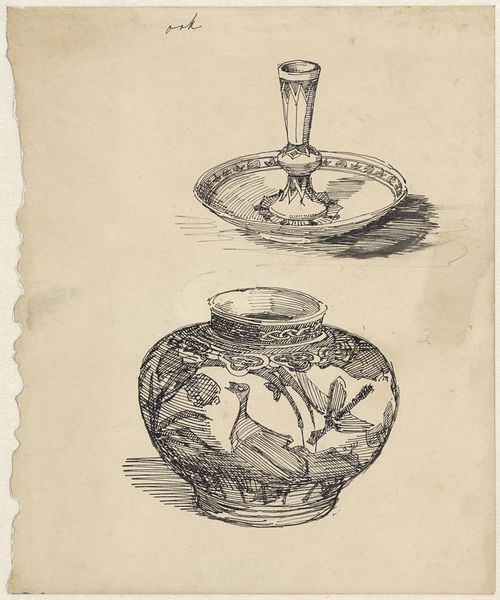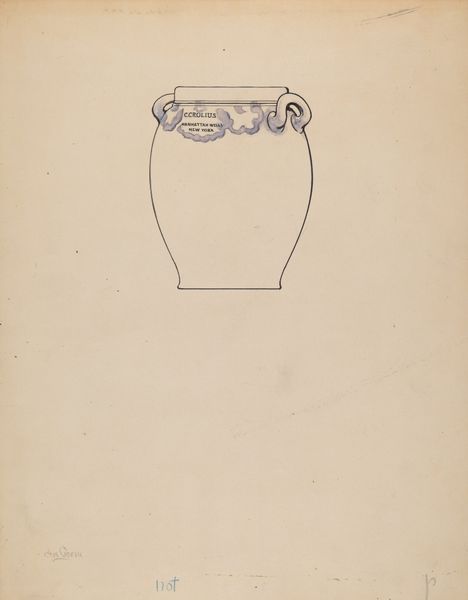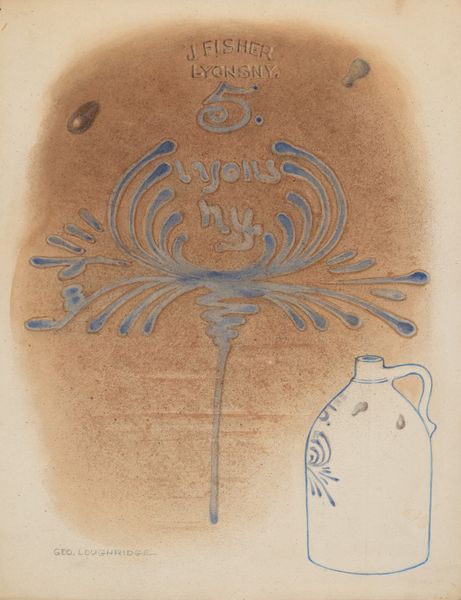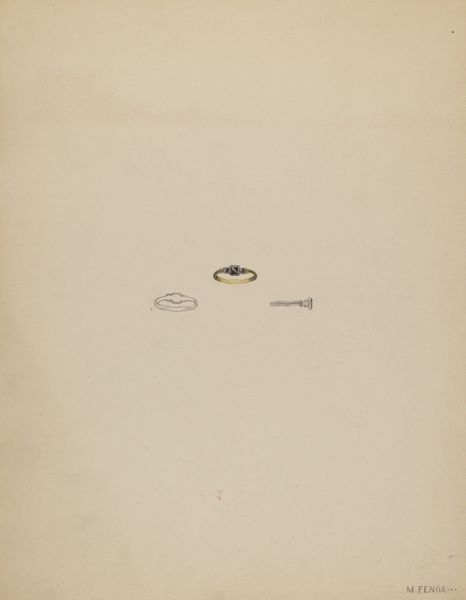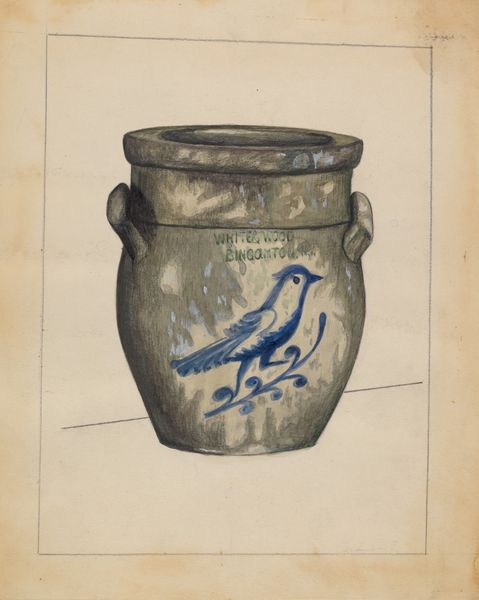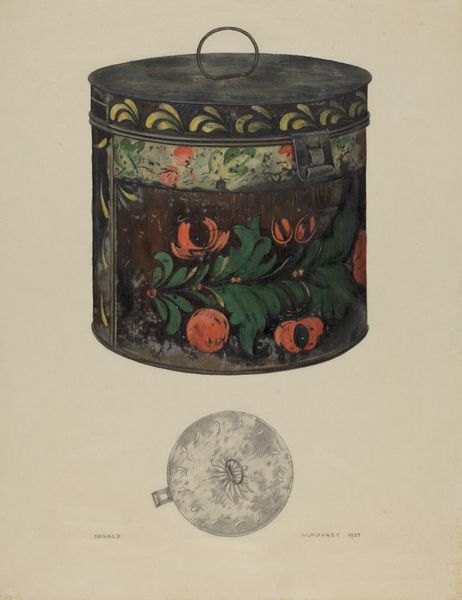
drawing, watercolor, ink
#
drawing
#
blue ink drawing
#
watercolor
#
ink
#
watercolour illustration
#
watercolor
Dimensions: overall: 28.8 x 24.4 cm (11 5/16 x 9 5/8 in.) Original IAD Object: 5 3/4" High 7 1/8" Dia(top) 7 1/4" Dia(base)
Copyright: National Gallery of Art: CC0 1.0
Curator: Let’s turn our attention to “Crock,” a piece Yolande Delasser created around 1937-1938. It employs a delicate blend of ink and watercolor, a fairly domestic subject that’s deceptively complex. What strikes you immediately? Editor: Well, there’s a haunting simplicity to it. It reminds me of something seen in a dream – like peering into a familiar yet unsettling space in the past. It seems suspended and strangely ethereal, especially the floating image below the object. Curator: Interesting you say “ethereal,” I read that shadow very differently. Consider how Delasser represents this common household object. Notice how she repeats a decorative, manufactured, floral image from the surface into a ghost or an imprint below. What work, and human labor, might we read here? Editor: Ah, yes, there's that element too - a hint of the manufacturing process of ceramics, almost mocking idealized ideas. And now, there's that stark white of the container, unadorned, while this kind of afterimage just below it looks handmade, and certainly more compelling to me than what the vessel seems meant for. I feel like that ghost reveals the potential locked inside something we usually overlook. Curator: Precisely! Think of the cottage industries producing these items. Her careful rendering challenges notions of 'high art' versus mere domestic production, pushing back on the hierarchies inherent in artistic spaces during this time. By isolating the Crock and its echo, the piece emphasizes the design's reproducibility and its cultural impact. Editor: It almost makes me think about time. Not just in terms of artistic recognition but, for the average person encountering these things, something about how what they possess becomes interwoven into their own existence and history. How labor and even love are put into these things--they become not just useful, but personal. Curator: And by presenting them here, she's acknowledging both the skill involved in production, and our connection to that labor. A complex dialogue between material production, art making and individual identity, if you will. Editor: Absolutely. Suddenly, what seemed a quaint still life becomes quite charged, really, full of little tremors that wake you up from simple acceptance. Curator: Indeed. Hopefully, the next visitor also feels that resonance when experiencing this object in real life, and contemplates where domestic lives and labour intersect.
Comments
No comments
Be the first to comment and join the conversation on the ultimate creative platform.
